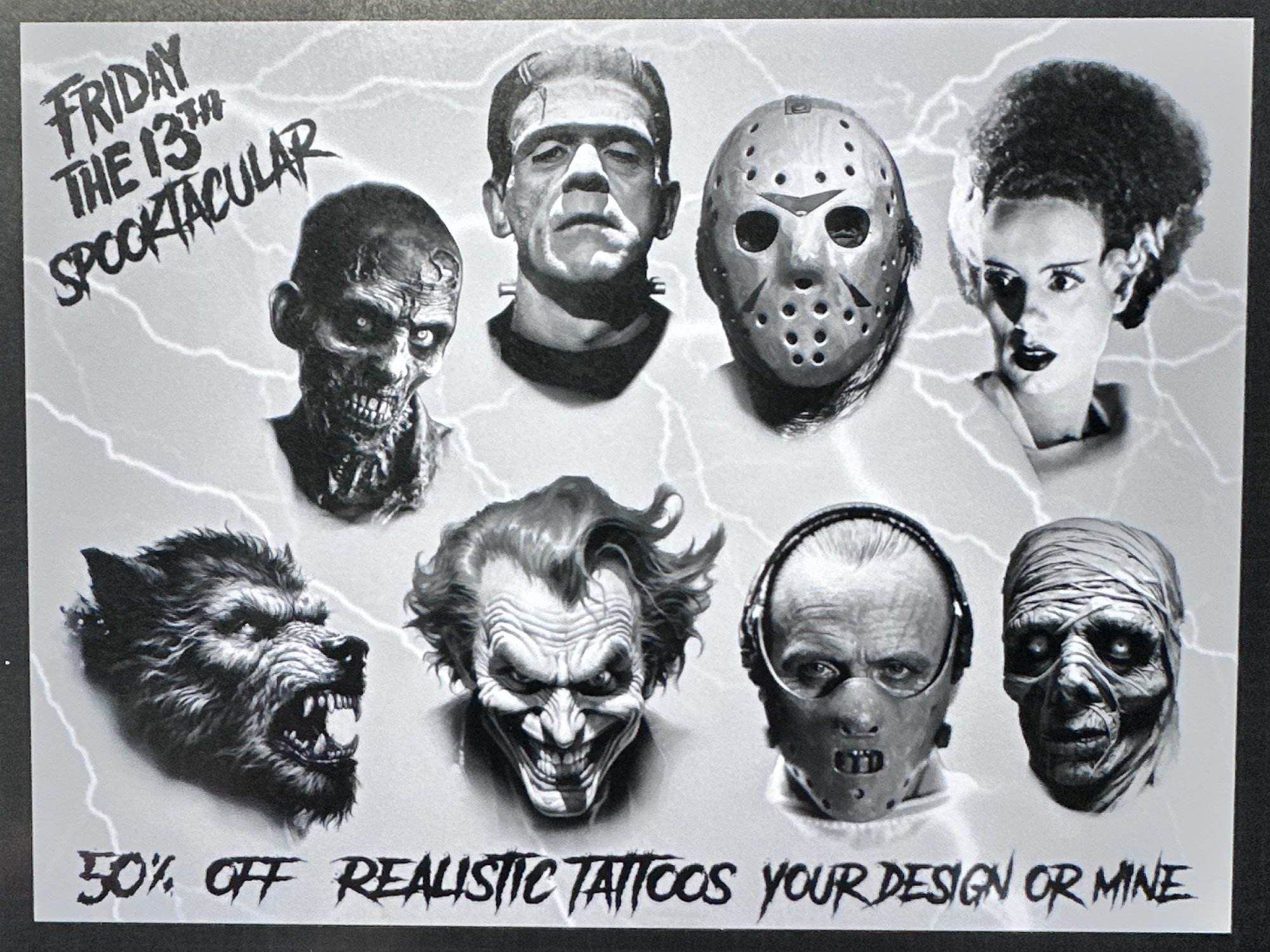Horror tattoos have long been a popular choice for fans of the macabre, but a new trend is taking the world of ink by storm: custom surreal horror tattoos. These designs go beyond traditional horror icons and themes, delving into the realms of the bizarre, dreamlike, and unsettling. Let’s explore what makes surreal horror tattoos so captivating and why they’re becoming a dominant style in the tattoo world.
What Are Surreal Horror Tattoos?
Surreal horror tattoos blend elements of traditional horror with surrealism, creating images that defy reality and evoke a deep sense of unease. Unlike straightforward depictions of monsters or ghouls, these tattoos often feature dreamlike, distorted imagery that challenges the viewer’s perception of what’s real and what’s imaginary.
Key elements of surreal horror tattoos include:
- Distorted Figures: Twisted, elongated, or fragmented bodies that defy the laws of anatomy.
- Abstract Imagery: Unusual, often symbolic objects, such as melting clocks or floating eyes, that invoke a sense of otherworldliness.
- Dark, Dreamlike Atmosphere: The use of muted colors or black and grey shading to create an eerie, nightmarish feel.

Why Surreal Horror Tattoos Are Gaining Popularity
The growing fascination with surreal horror tattoos is closely tied to the desire for more personalized, unique designs. Unlike more traditional horror tattoos, which may feature well-known characters or symbols, surreal horror pieces allow for more creativity and individual expression. They are often custom-drawn for each client, making them one-of-a-kind artworks.
The Appeal of the Unconventional
Surreal horror tattoos offer a break from the conventional. While classic designs might draw inspiration from horror movies or folklore, surreal horror invites the viewer into the unknown. There are no rules, no set patterns—just the freedom to explore the strange and the unsettling. For tattoo enthusiasts looking to push boundaries and make a bold statement, this freedom is highly appealing.
The Influence of Art Movements on Surreal Horror Tattoos
Surreal horror tattoos are heavily influenced by surrealist art, a movement that emerged in the early 20th century. Artists like Salvador Dalí and René Magritte challenged traditional perceptions of reality, creating dreamlike landscapes filled with bizarre, often unnerving imagery. Today, these same concepts are being applied in the tattoo world.
Some key influences on surreal horror tattoo designs include:
- Dreamscapes: Tattoos that mimic the irrational, flowing nature of dreams.
- Symbolism: Using unexpected objects or combinations of elements to represent deeper, hidden meanings.
- Psychological Depth: Designs that evoke feelings of fear, confusion, or disorientation, tapping into the darker corners of the subconscious.
Creating Custom Surreal Horror Tattoos
Creating a custom surreal horror tattoo is a deeply collaborative process between the artist and the client. The goal is to blend personal ideas and visions with surreal elements to craft a design that is both meaningful and visually striking. Here’s how the process often unfolds:
Brainstorming Concepts
The first step involves discussing the client’s ideas, inspirations, and preferences. Whether it’s a fear they want to personify, a recurring nightmare, or a symbolic image that haunts them, this stage is crucial for crafting a unique design.
Sketching the Design
Once the concept is clear, the artist will begin sketching. Surreal horror tattoos typically require more planning and creativity than traditional designs, as the composition often includes unconventional elements that must be carefully balanced.
Refining the Vision
Surreal designs often evolve over multiple revisions, with the client and artist working together to fine-tune the elements. This might involve adjusting the proportions of distorted figures, adding symbolic details, or experimenting with different shading techniques to achieve the desired atmosphere.

Techniques Used in Surreal Horror Tattoos
Achieving the eerie, dreamlike quality of a surreal horror tattoo requires skill and expertise. Artists may use a combination of techniques to bring these nightmarish visions to life.
Black and Grey Shading
Black and grey shading is a staple of surreal horror tattoos. This technique creates depth and contrast, giving the design an atmospheric, shadowy feel. Soft shading can be used to blur the lines between reality and imagination, enhancing the surreal nature of the tattoo.
Dotwork and Stippling
Dotwork and stippling techniques are often employed to create texture and detail in surreal tattoos. By using tiny dots to build up areas of shadow or light, artists can achieve intricate designs that add an extra layer of visual complexity.
Color Contrasts
While many surreal horror tattoos are done in black and grey, some incorporate bursts of color for a striking effect. Vivid reds, blues, and purples can be used to highlight specific elements of the design, creating a jarring contrast that draws the eye and adds to the overall sense of unease.
Conclusion: Embrace the Strange with Surreal Horror Tattoos
Custom surreal horror tattoos are more than just body art—they are intricate, deeply personal works of art that push the boundaries of traditional tattooing. For those drawn to the darker, more abstract side of life, a surreal horror tattoo offers a unique way to express their inner fears and fantasies. Whether you’re looking to explore the unknown or create something truly one-of-a-kind, the world of surreal horror tattoos offers endless possibilities for those brave enough to venture into the nightmarish unknown.
Interested in learning more about surreal horror tattoos? Reach out for a consultation and explore the possibilities of turning your dreams—or nightmares—into a hauntingly beautiful work of art.
